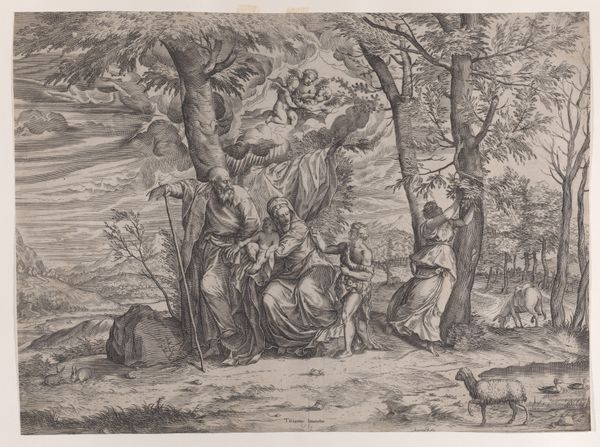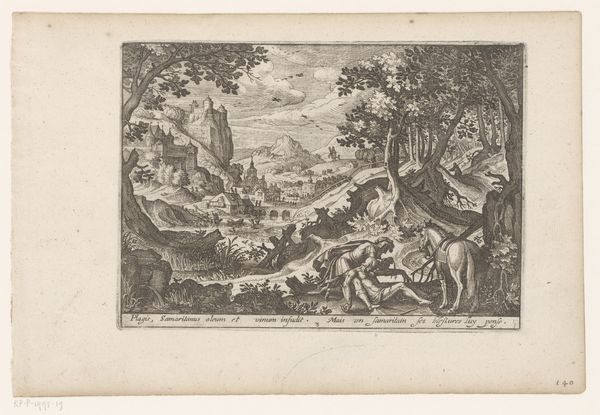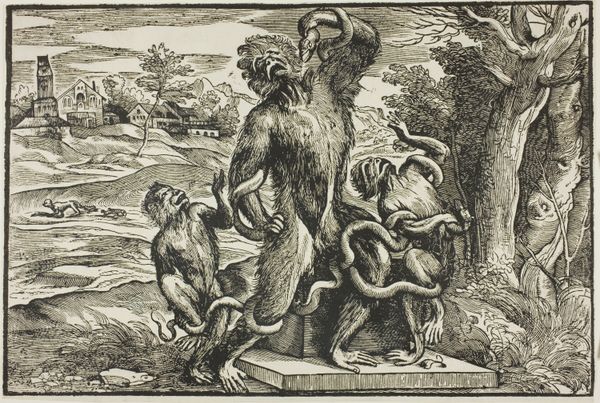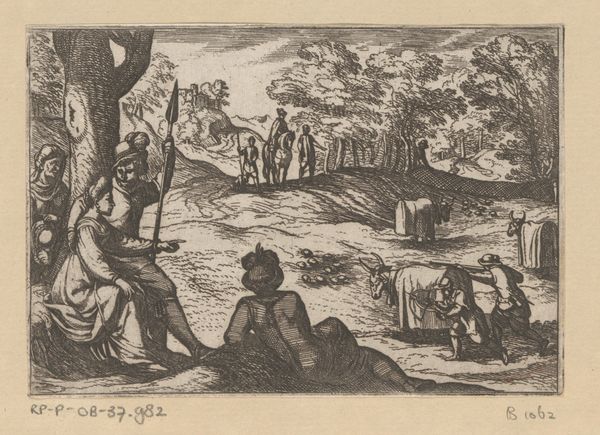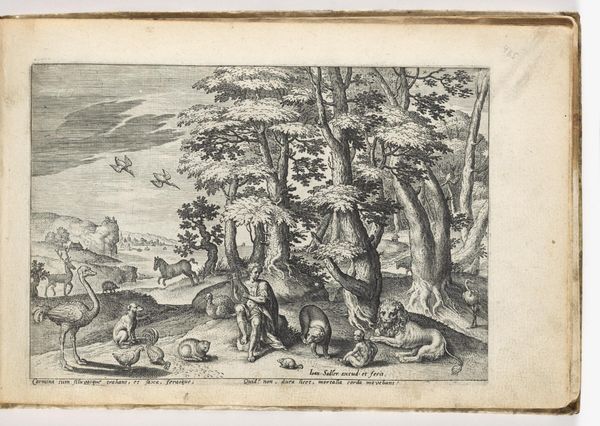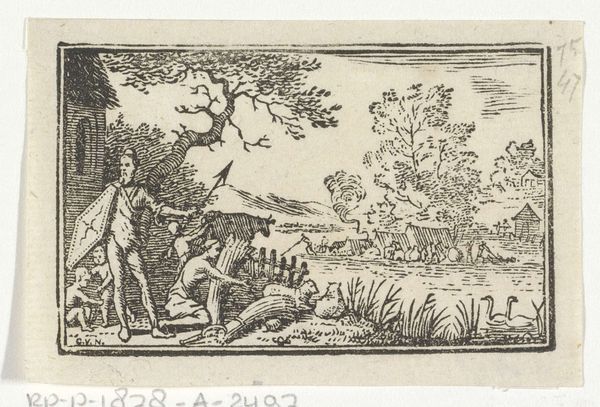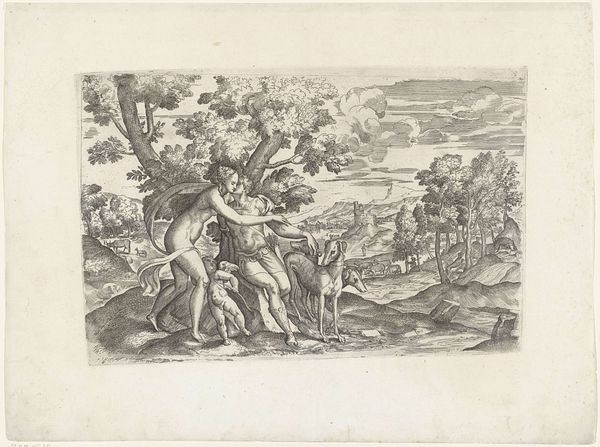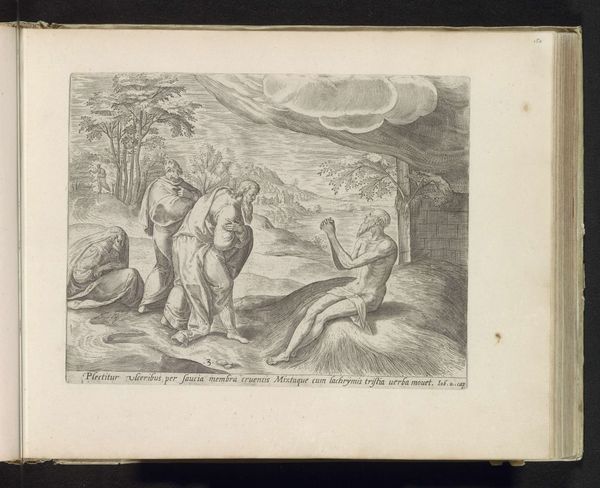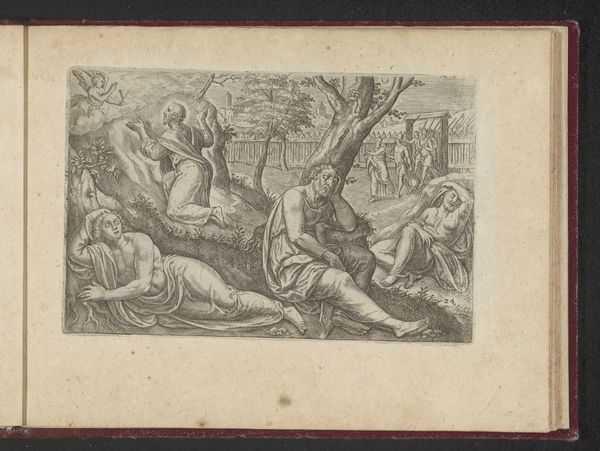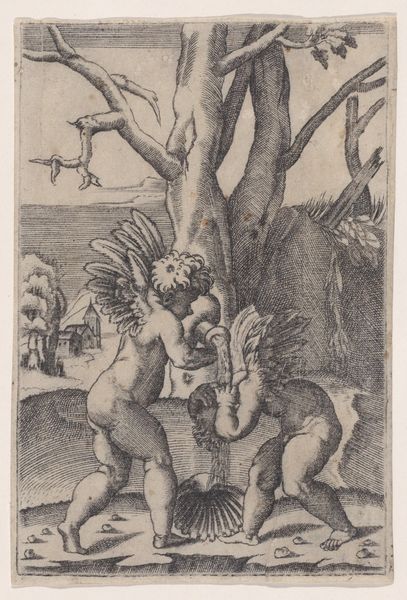
Caricature of the Laocoön scuptural group, excavated in Rome in 1506 1535 - 1545
0:00
0:00
drawing, print, pen, engraving
#
pencil drawn
#
drawing
#
ink drawing
# print
#
caricature
#
mannerism
#
figuration
#
11_renaissance
#
pencil drawing
#
pen
#
history-painting
#
italian-renaissance
#
engraving
Dimensions: sheet: 14 1/4 x 19 3/8 in. (36.2 x 49.2 cm) image: 10 3/4 x 15 3/4 in. (27.3 x 40 cm)
Copyright: Public Domain
Curator: This intriguing engraving, attributed to Nicolò Boldrini and dating from 1535 to 1545, is titled "Caricature of the Laocoön sculptural group, excavated in Rome in 1506." The original Laocoön is, of course, a Hellenistic masterpiece depicting the Trojan priest and his sons being attacked by sea serpents. Editor: It's unsettling. There's a dark humor in reducing this intense scene of human suffering to...monkeys being strangled by snakes. What a grotesque parody of the original, even if its medium-- print, of course, removes it in scale from sculpture. Curator: Indeed. Its commentary cuts deeply when you consider the Renaissance obsession with classical antiquity. The Laocoön's rediscovery was a sensation. So, what does it mean to then lampoon such an admired work? Editor: It feels almost like a revolt against high art. A visual sneer at the self-seriousness of the art world and the reverence granted to classical ideals. Notice the exaggerated features, the chaotic composition; it's all so purposefully 'un-classical,' right? Curator: Precisely. There’s a debate on its meaning, whether it's critiquing the art world itself or a specific patron’s taste. But such caricature aligns with a broader societal commentary present within prints of the time, speaking truth to power in a more accessible format. Editor: Accessible, yes, but also vicious! The serpent binds so effectively. Considering contemporary notions of empire, control, and hierarchies, this could certainly serve as scathing, biting, satire, critiquing such powerful figures or systems— perhaps reflecting deep-seated anxiety around artistic interpretation. Curator: Or consider the impact of disease. One interpretation suggests Boldrini drew it based on plague-stricken apes he saw— a Memento Mori, maybe? I wonder if there are medical treatises that comment upon Titian's interpretations of Galen, as is annotated beneath it! Editor: Hmm. I wonder if this offers an intriguing glimpse into the way that historical anxieties and power dynamics have consistently been portrayed through animals... that speaks loudly in our own contemporary times too. Curator: I'd agree completely. Such subversive takes keep the dialogue going—a great success if we keep in mind this image was disseminated as a print!
Comments
No comments
Be the first to comment and join the conversation on the ultimate creative platform.
